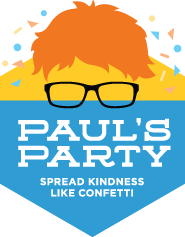Paul had a bunch of scars. His back from his closure. Big like a horizontal zipper. His head and chest and stomach from shunt revisions. The front of his neck from his tracheotomy, a little hole by his voice box. His upper back from Chiari decompression, big and ugly but mostly out of sight. His feet and legs, from trying to straighten them out or make them function, over and over again. Paul was a big bunch of scars.
At first, I was relieved when scars would mostly heal. I thought he could hide them and be “normal”. But they kept piling up. So, eventually, they became like badges or tattoos. We became proud of each one, because it reminded us of a little victory. The tracheotomy scar was the best, I saw it every day, big and proud on the front of his neck, representing the day he won that battle.
Paul and I talked about his scars sometimes. He never brought it up, but I was afraid he would be self-conscious or embarrassed about them, so I did. I would point them out, or touch them, and tell him what each one was. I told him he should be proud; most kids don’t have such good scars. I hoped he would feel good about them, too. I would show him mine and tell him the story about each one. Very minor and boring compared to his amazing, amazing scars.
Whenever I see a scar on someone now, I don’t draw back or even ignore it. I ask and listen to how the person got it. Each person that has one is a survivor. Scars are not ugly and people with good scars are more interesting.
